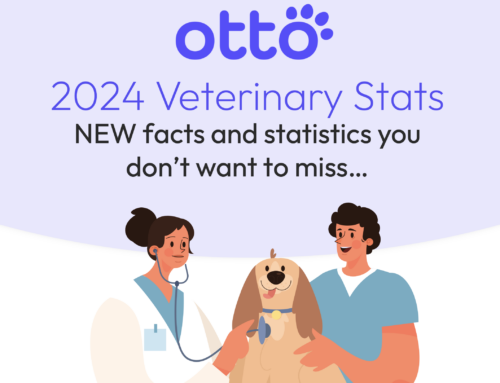
Veterinary Record Keeping: Medical Templates, Examples & Laws
Record keeping is very important in veterinary medicine. While there are many rules that a veterinarian must follow to make sure that they are maintaining proper records, there are many templates that you can use to help make it easier for these records to be concise and accurate. This will help you adhere to the laws and also be able to follow patient care in your hospital.
What is the importance of record keeping in veterinary practices & animal care?
In veterinary medicine, records are kept so that you can keep track of what is medically going on with that patient. When a pet comes into the hospital, the DVM will make note of any abnormalities noticed in their examination, along with any diagnostic testing or treatments that were recommended. These clinical records help both the veterinarian and the pet owner know what has happened to their pet in the past.
Veterinary medical record keeping is very important to keep an accurate log of how a patient is responding to medication and any notes about the health of these patients. Without these clinical records, a veterinarian could not remember every patient that they see along with the medications that they prescribed and surgeries that they had for the whole life of the patient.
The clinical records also serve as a legal document to use in court in case anything goes wrong with the patient’s care and the owner wants to sue due to malpractice regarding the type of care or lack of care provided.
Veterinary record keeping requirements
While the laws on record-keeping vary from state to state, these are a few laws that veterinarians in every state must follow…
Length of time you keep records
The length of time that you have to keep your veterinary records depends on the state that you live in and the laws set by that veterinary board. The typical time frame is 3 to 5 years. The American Veterinary Medical Association (AVMA) has compiled a list of the different policies for record retention based on each state.
Keeping Records Clear and Concise
When writing your records, you should use language that is familiar to all veterinarians with abbreviations that are commonly known. You should write medical records in such a way that any veterinarian can read the records and understand what is going on enough to continue with the care and treatment of that patient.
Records Kept in Confidence
Any pet’s animal health information in their medical records and the owner’s information will need to be kept confidential. Certain state laws even require your client to authorize the release of any veterinary records, client, and patient information. The AVMA has compiled a state list of confidentiality of veterinary patient records and which states require authorization from clients before records can be shared with other veterinary clinics or other people.
Each state has the ability to make other rules and enforce their veterinary practice act how they want. Any questions on veterinary record-keeping should be addressed with your specific state veterinary medical board.
Methods of record-keeping in veterinary practices
There are many different ways you can go about keeping veterinary records. These are some of the most common methods of keeping veterinary records in practice
1. Veterinary electronic medical records software
Veterinary practice management software (PIMS) is used by most veterinary clinics and veterinary hospitals of all types and sizes to keep and maintain clinical records. There are many great advantages and some disadvantages to this type of record-keeping. Electronic medical records are becoming the most common type of medical records kept.
Advantages of using electronic medical records software
- Easy to read – no illegible handwriting to decipher
- Easy to for team members to access, or easy to send to clients or another clinic
- Can use easy-to-use templates to make record keeping easier
Disadvantages of using electronic medical records software
- Involves a training session and basic computer skills to use
- Can be time consuming if you use software that does not integrate with your PIMS
- Typically, you must be at the clinic to access the system, but this can be solved with a cloud-based PIMS
2. Basic veterinary medical records templates
Some practices have paper records and have basic templates that a veterinarian fills out for each visit. These templates vary based on form use and appointment type, along with areas for you to write in any other information including vaccination records, diagnosis, treatment plans and future plans.
Advantages of using veterinary medical records templates
- Easy to use with little or no training
- No need for computers or a practice management system
Disadvantages of using veterinary medical records templates
- Hand written records can be harder to read
- Can easily be lost or difficult to share with team members or clients
- Limited security and backups ability
Example veterinary medical records templates you will need
There are many veterinary medical record templates that you can use to make writing records quicker and easier. These are some veterinary medical record examples that you can use.
Veterinary soap template example
Veterinary SOAP notes (an acronym which stands for Subjective, Objective, Assessment, and Plan), is a common way for veterinarians to organize and compile medication records. It is a way for clinics to record, document, and store patient’s medical information in a systematic way, while providing a framework to acquire all necessary information to effectively evaluate the patient.
(S)ubjective
Subjective data gathering includes asking intelligent questions to the client to get an understanding of their ideas or feelings of what the pet is experiencing. This type of data is used to get a perspective of how the client sees their pet’s current health. Subjective data includes (but not limited to) items such as: Past medical history, longevity and history of present illness, analysis of symptoms, environmental exposure, and diet.
(O)bjective
Objective data points are most often measurable tests that can be conducted in-clinic during direct physical examination of the patient. Examples of this information gathering includes: Vital signs, x-rays, blood tests, urine tests, lab data and results, review of other doctors’ results, and any other diagnostic data.
(A)ssessment
The subjective data collected in the first case and the objective data in the second step are critically analyzed, relevant portions taken and the practice tries to make the diagnosis here.
The main challenge at this step is that different subjective and objective data can lead to different diagnoses; veterinary doctors must use their wisdom to the fullest to lead to a focused diagnosis, which serves as the input to the next step.
(P)lan
Once the clinic makes the assessment notes, the next step is to decide the course of action. This course of action comes in the plan.
The plan includes all the details, which the veterinary wants to suggest or instruct the patient in order to solve the problems of the patient – and preferably reach a diagnosis. The plan can include recommending more tests in the lab, more radiological work, referrals, procedures, medications, etc.
FAQs
Final points
There are many different ways that you can keep medical records and many different laws concerning veterinary medical record keeping that you must follow. It is best to read the rules and regulations from your state veterinary medical association to see what constitutes good record keeping for your individual state.




